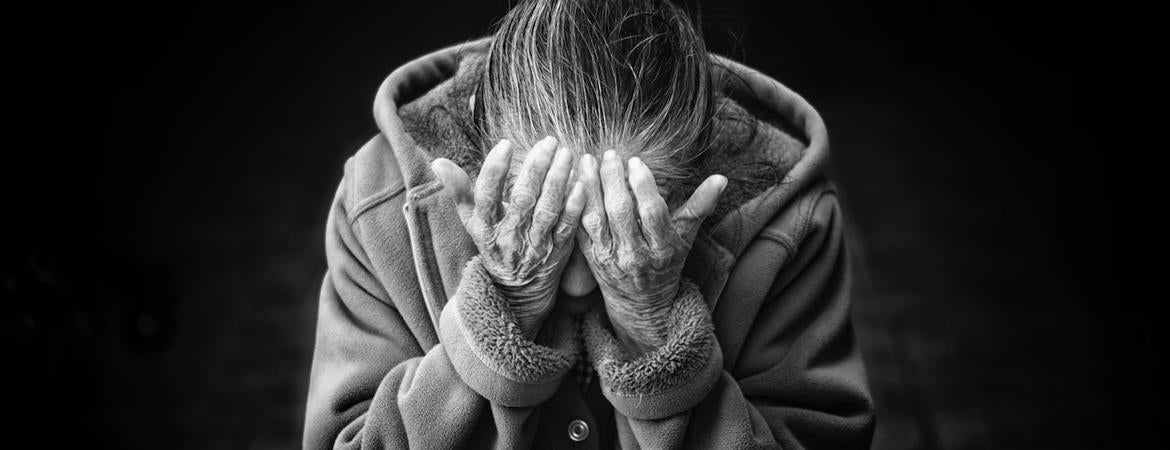
More than 40 million adults in the United States have an anxiety disorder. Not surprisingly, the COVID-19 pandemic exacerbated the mental health crisis the country faces. Indeed, just last week, a panel of medical experts recommended for the first time that doctors screen all adult patients under 65 for anxiety; a similar recommendation for children and teenagers was issued earlier this year.
Below, experts in the Department of Psychiatry and Neuroscience at the School of Medicine at the University of California, Riverside, answer questions about mental health issues since the pandemic as they pertain to adults, children, and students.
Dr. Christopher G. Fichtner, clinical professor and interim chair
Q: How has anxiety changed among adults since the pandemic? What are you seeing more of? Less of?
With the pandemic there have been some patients who were having anxiety at work and were relieved to switch to remote work, which was actually helpful for them. On the other hand, there have been individuals who were not necessarily struggling with work-related anxiety but who, nonetheless, were happy to have the opportunity to work from home. Some of these individuals have found themselves becoming more socially avoidant, not eager to return to work in person because the thought now makes them anxious; but others feel isolated, miss the interpersonal contact and are anxious or eager to reconnect. That may vary based on the individual’s home circumstance — for example, whether they live alone or with others. We do see some patients who, having been spending much more time at home, have developed new symptoms of social anxiety or even panic attacks when they return to work on-site and are commuting.
In general, patients who were anxious before the pandemic have been more anxious during the pandemic for a number of reasons, including the threat of illness, the stress of its impact on friends and family, and changes in routines at home involving children, school and daycare. Dr. Kimberley Lakes in our department here at UCR recently published an article in JAMA Pediatrics in which she and her colleagues analyzed data on children’s activity levels, showing the kids had become significantly less active — and, in fact, less active than they need to be for optimum health and well-being.
While many have appreciated the opportunity to work from home, we have also been reminded that it is important to stay connected, and that missing the opportunity to connect can also be a source of anxiety.
Dr. Takesha J. Cooper, associate professor of psychiatry
Q: What are some new anxieties you have seen in children and teenagers since the start of the pandemic?
I have seen an increase in social anxiety disorder, generalized anxiety disorder, and panic disorder. With school closures, children had fewer opportunities to socialize and interact with their peers. Many children turned to social media, but we know this is not a substitute for healthy in-person peer-to-peer interaction. Once schools re-opened, many children struggled with navigating and reestablishing relationships with their peers, and symptoms that accompanied this were irritability, excessive worries that are difficult to control, poor sleep, and panic attacks — all of which are symptoms of anxiety disorders. We also noticed increase in depression as many children worried about family finances and loved ones becoming sick or even dying.
Q: How can children and teenagers (and their parents) best manage these new anxieties?
Parents can spend time talking with their children about their child’s worries to better understand what their child is going through. Parents can model calmness and encourage coping skills, such as abdominal breathing, going for a calming walk, and ensuring the child is getting adequate sleep. Providing structure to the child’s day can also help provide predictability which can be helpful for children and teens. If excessive worries do not improve, parents should seek expert help in the form of a therapist or child and adolescent psychiatrist who can incorporate psychoeducation and cognitive behavioral therapy, or CBT. CBT is an evidence-based therapy that helps a child understand the connection between their thoughts, feelings, and behaviors. This helps children challenge their worry thoughts, which helps them develop more balanced thinking, thereby reducing anxiety. For severe anxiety, children often benefit from a combination of therapy and medication.
Dr. Toshia Ann Yamaguchi, director of student health and wellness at UCR Health and health sciences assistant clinical professor
Q: How has the pandemic affected student mental health?
The pandemic disrupted college students’ college experience, their home life, their families, their support networks, their finances, and their plans for the future. Specifically, American college students have attributed to the pandemic disruption to sleep and eating patterns, increased social isolation, and concerns about academic performance. In a spring 2020 survey, 20% of college students reported their mental health had worsened significantly, 48% reported financial concerns, 80% reported difficulty concentrating. In a follow-up fall 2020 survey, 89% of college students reported that they were experiencing stress or anxiety, 25% reported increased depression during the pandemic.
Q: What sorts of mental health issues have come up that you didn’t see as much before?
Mostly I’m seeing standard cases at my clinic for undergraduate, graduate, and professional students, but one thing that is new is patients reporting new problems with either concentration or fatigue, despite lack of any other physical or psychiatric symptom. These may reflect neuropsychiatric symptoms of long Covid. More research is needed. Among my child patients, I’m seeing more patients presenting with concerns and symptoms, even substance addictions, informed by TikTok. Unfortunately, it is largely misinformation.
Q: What general advice do you have for students to best manage anxieties resulting from the pandemic?
First, I want to impart that as the data above depicts, struggling in college is commonplace. It is a new environment to navigate, full of its own unique experiences, stressors, resources, and limitations. To further complicate things, the internal world of the young adult is underpinned by ongoing neuropsychological changes. Therefore, naturally, exploration and adaptation are often required for success in this new developmental chapter. There are a number of things students can try to help support their mental health. The key is to have both an open mind and persistence when trying to find a strategy that works for you; many strategies require a dedicated trial period before one starts to notice results.
Q: What are some recommendations you can share?
Here are some tried and true recommendations:
- While following safety guidelines, I recommend students spend time with family and friends. This targets the isolation that commonly triggers psychological distress.
- Students commonly report to me that implementing an exercise routine helps them to feel better.
- Forest bathing is a Japanese practice of restoring wellness through the sensory experience of being in nature. Try hiking, going to the beach, or even taking a walk outside your home.
- Prioritize your sleep. A regular sleep routine has mental and physical health benefits. Try bedtime yoga on YouTube and sleep podcasts. Try blue-light-blocking glasses.
- Meditation and mindfulness apps and YouTube channels are ubiquitous. Try Calm or Headspace. The U.S. Dept. of Veterans Affairs YouTube channel has a #LiveWholeHealth playlist teaching and practicing various mindful techniques.
- Workbooks are helpful resources to approach therapy in the comfort of your home and at your own pace. I recommend "The Mindful Self-Compassion Workbook" by Kristen Neff and Christopher Germer. Self-compassion therapy is a more contemporary therapy modality that offers evidence-based practices. "Mind Over Mood" by Dennis Greenberger and Christine A. Padesky and "Feeling Good" by David D. Burns are CBT classics that therapists swear by. They truly stand the test of time.
- Decreasing your use or even achieving sobriety from alcohol, cannabis, nicotine, and/or caffeine can produce notable differences in one’s mental health. As I always like to say, the desired neuropsychological effects we are chasing when using these substances are produced by the presence and activity of these substances in our brain. The substances are, therefore, present and available to act on the brain in a way that produces the negative neuropsychological effects associated with these substances.
- Visit your primary care physician regularly for annual exams and to address any medical concerns. The health of the body and mind are strongly related. Sometimes mental health issues stem from underlying medical conditions.
- Look into mental health support resources.
- Reach out to professors, teaching assistants, and other campus resources if you’re struggling in class. Academic difficulty is both a trigger for and a symptom of psychological distress among college students.






